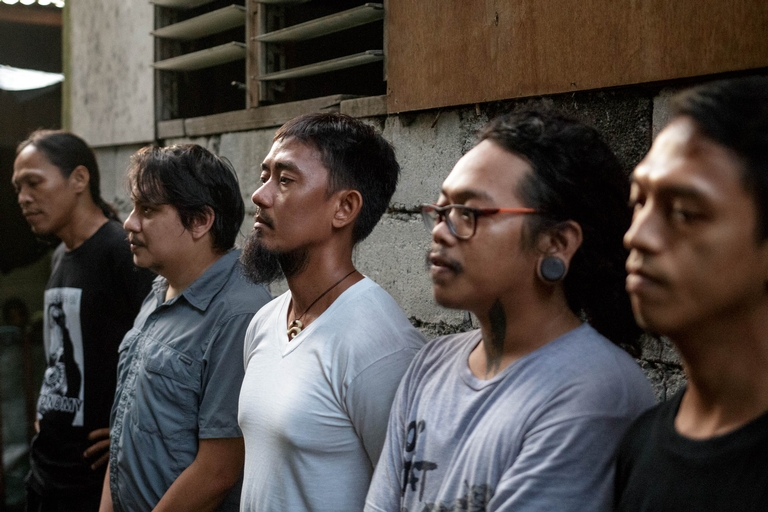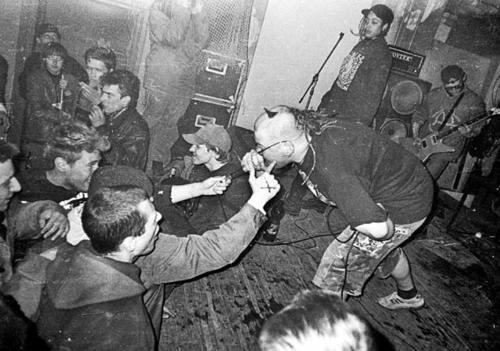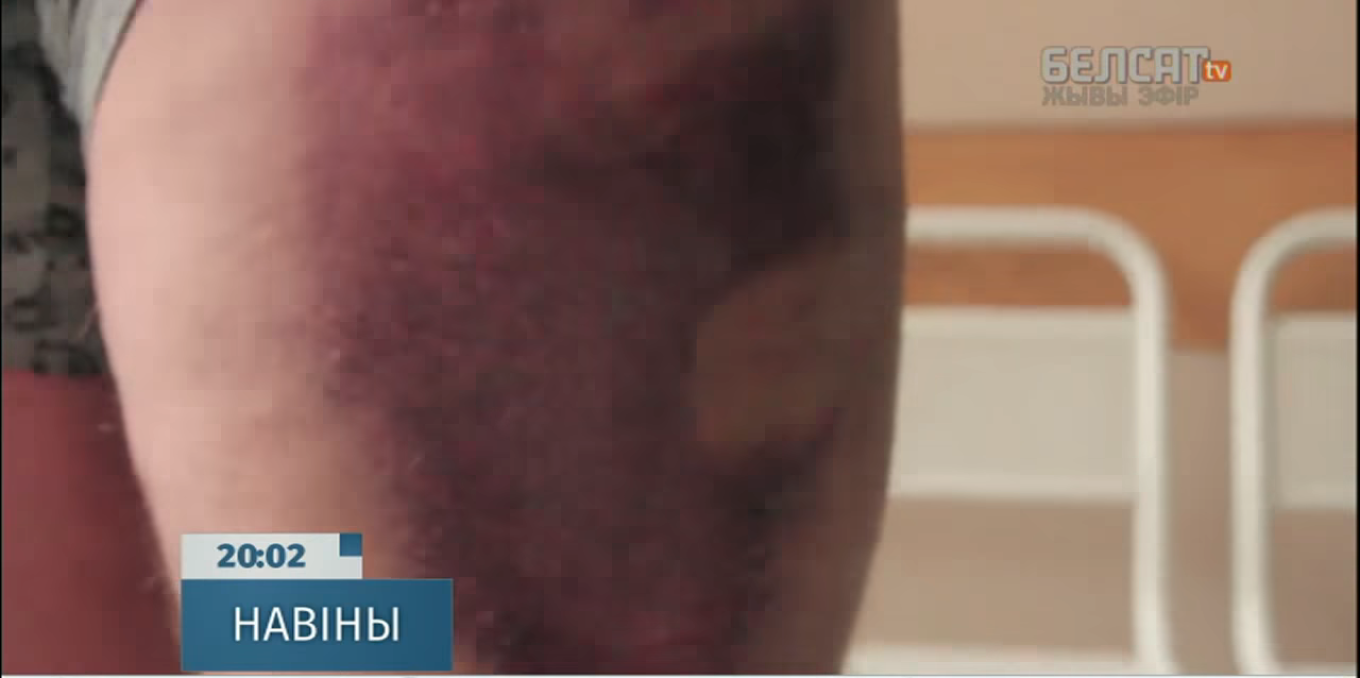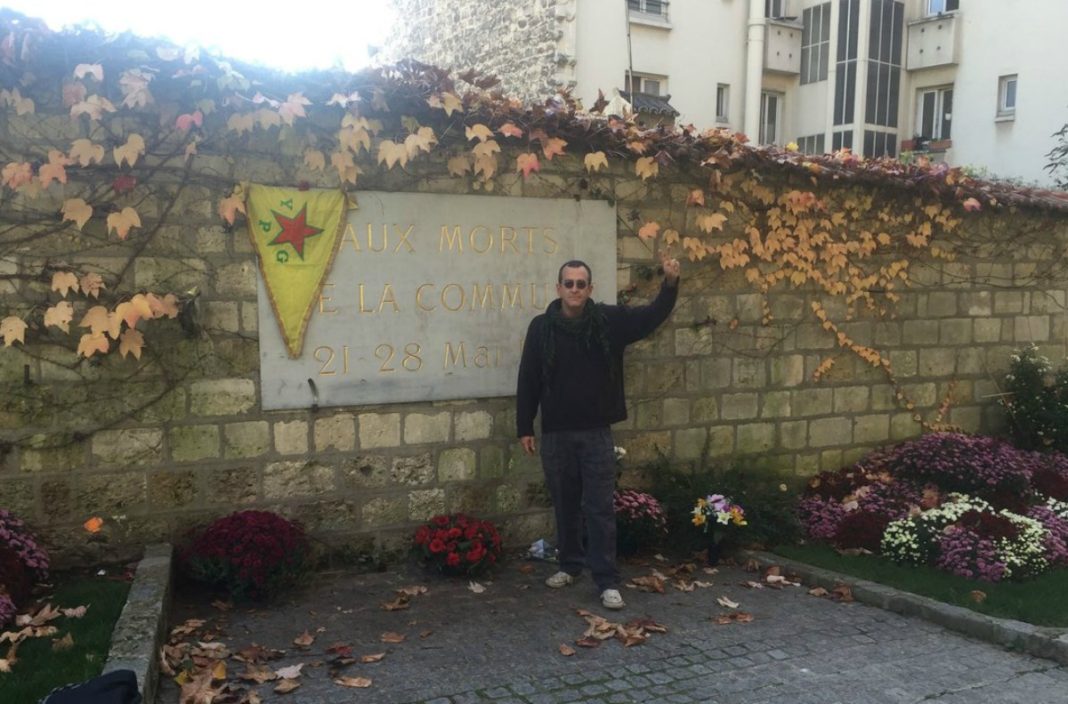Manila.
A blue, mini gas tank with a cooking dock sits on the corner of Taks Barbin’s living room. He turns the knob, put a water-filled kettle on top of the dock, and opens foldable plastic chairs, forming a circle. This living room is a modest extension of his bedroom; a space that makes up a part of the interconnected shanties that snake around one of UP Diliman’s side streets.
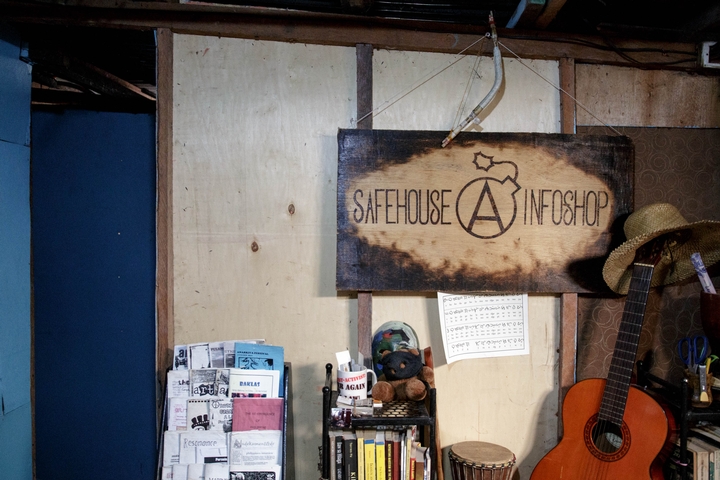
“Mostly it’s called infoshop, a place where you can share information” says Barbin while pointing towards the other side of his living room — a corner neatly crammed with worn-out books, original and photocopied zines, and indigenous musical instruments. The wooden sign above this corner reads “Safehouse Infoshop,” with the capital letter ‘A’ enclosed in an illustration of a detonating bomb.
Barbin, a student of UP’s Malikhaing Pagsulat sa Filipino program, pours the hot water to two brown mugs and gives the other one to Bas Umali, a long-haired Uber driver dressed in a T-shirt with the words “In Defense of Autonomy” running across it. Bas, like Taks, also runs his own ‘infoshop,’ called Onsite, headquartered in the slums of Muntinlupa where they publish zines that discuss the solutions to the rampant flood in the area.
“That’s what the infoshops typically do— they make publication ours is about floods, we also attack local politicians. Every election, we conduct anti election campaigns” he says.
The Safehouse Infoshop is a space in UP Diliman where anarchists share books and zines about disaster communism, critical thinking as an anarchist weapon, and community-organizing, among many others. Photo by JL JAVIER
A closer look at the piles of literature at the Safehouse reveals some of the written works by social activists and anarchist writers Errico Malatesta and John Zerzan, as well as manifestos on disaster communism, critical thinking as an anarchist weapon, and community-organizing — materials that could deepen the knowledge on a controversial philosophy: anarchism.
The ‘infoshops’ that Barbin and Umali separately started serve as a resource center where people within their communities can come in and share skills and solutions to problems specific to their community. It is also a place where anarchists convene to discuss political philosophies and the ways in which they can come together to further a certain cause — from promoting urban gardening to disrupting pork barrel.
Every year since 2014, during the Philippine president’s State of the Nation Address, their network of anarchists gather at the Quezon City Memorial Circle to hold a ‘peaceful protest.’ They call it Sining, Kalikasan, Aklasan, a day-long guerilla event where they share the many skills and solutions being done in their respective communities; solutions that need not come from any type of political leader.
“I’ve experienced working class life. Nothing happens until you grow old, until you die” – Ron Solis
Here lies the practical solutions that we are facing. They[anarchists] don’t claim ownership to the activities they conduct. They don’t claim that we are the only persons that are allowed to do this, that we are the vanguard or pioneer of this practice… there were things like that in the past. We call them the old school.” says Barbin.
Umali fiddles with his phone while explaining how this “new school” of anarchists works. “There is no recruitment, no organization here… but it does not mean we are unorganized, but it also does not mean we do this individually” he says, almost contradicting himself in one breath.
“We are organized in a way that it is voluntary. The process in which we organize is based on the ourselves—What we contribute, commit in terms of time, resources and many more.” He says. “this is not about being an activist, joining the LSF (Libertarian Socialist Federation)… like Bonifacio, and then you become a nationalist? No it’s not like that” Umali adds, while mimicking historical revolutionaries of the Philippines that slash their wrists in the name of solidarity.
The misconception about anarchism
The anarchist that the general public has come to picture is more than a revolutionary fighting for its country; they’ve been portrayed as groups of people in all-black ensembles with ski masks and baseball bats in tow, ready to smash the nearest glass window. The term is often equated to chaos in the streets, the police stopping ‘rebels’ with riot shields and fire extinguishers.
This picture that circulates within the public’s modern consciousness was purportedly due to the highly mediatized World Trade Organization protest in Seattle in the ‘80s. These men with faces covered in handkerchiefs are called Black Bloc anarchists, a sect of anarchism whose main method of protest is property destruction.
Umali, a then-leftist turned anarchist, explains that within the anarchist network, people do various things to push for what they want. Some anarchists’ mode of protest may be simply giving out things in what they call a ‘free market,’ while others, like the Black Bloc anarchists, do take a more ‘violent’ route.
“Their focus is destroying symbols of oppression, of capitalism, that’s why starbucks, Mcdonalds. The big corporate symbols are the victims. That’s what they target”says Umali.
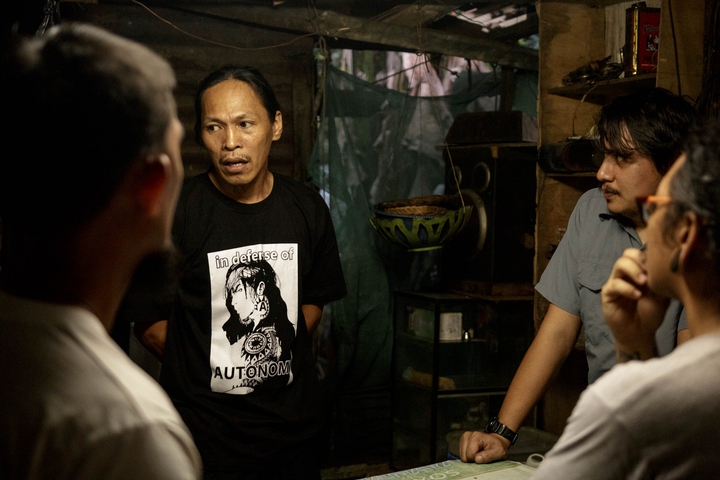
After the rage of riots in the U.S. in the ‘80s, Umali witnessed that a more politicized punk scene in the Philippines suddenly started to take root. “in the past, 80’s punk, it was mostly cultural… that was sex pistols anarchy. A lot of them, was mostly organized by the left”, he says “but during around 1996, it was made clear by the individuals that they were not Marxists, we are not leftists, we are anarchists.”
The motivations of Filipino anarchists
The sound of multiple footsteps stepping on twigs and dead leaves starts getting louder. Fread de Mesa, a man in dreadlocks and tunnel earrings, knocks on the door of Barbin’s living room. “Tokhang, tokhang,” he teasingly whispers. Behind him is Chuck Baclagon, in a gray button-down wearing a cap that resembles Che Guevara’s military beret, and Ron Solis, wearing a half-grown beard and a necklace with a Baybayin pendant.
Together they complete the chairs Barbin arranged in a circle. One by one, the newly arrived anarchists start sharing what attracted them to the anarchist scene, despite all that it is generally perceived of it.
“Regarding my involvement with anarchists, it started in church… they are called Mennonites and Anabaptists and the traditions of that church leans on justice and peace and its nature is sort of anti-authoritarian.” says de Mesa, still an active member of Peace Church Philippines, instantly breaking the image of the stereotypical churchgoer one may conventionally imagine.
“They don’t believe in the absolute power of the state. Their allegiance is not with the state or with the president, but with Jesus Christ.” he adds.
Baclagon, on the other hand, got involved with the anarchist network through his work with 350.org, an international environmental NGO that fights to eradicate the use of fossil fuels, among others. ‘Any activity or campaign that is related to reduction in emissions, that is 350 most likely … there are a lot of that in the anarchist community.” Baclagon says.
“Just because you cannot fulfill or play the part, does not mean you won’t do anything about it. And because you did nothing about it, nothing changed.” — Chuck Baclagon
While de Mesa and Baclagon are still within civic society organizations, Solis has stopped working altogether. A seaman for five years prior to being a ‘full-time anarchist’, he spends his time volunteering for environmental organizations like Greenpeace and 350.
“if you work you are still within the system. The problem stills stay the same. It’s better to be with yourself. You do your own hustle” solis says. “I’ve experienced the working class life. Nothing will happen until you grow old, until you die, you are still in the bottom [the very bottom].”
The difference between the far Left and anarchism
The group exchanges personal stories of how they found anarchism or how anarchism found them; their insights reek of the anti-establishment, anti-authoritarian ethos that seems to bind them all. Their discussions are heavy on turning their backs to consumerist practice, from exploring ways to start farming in their own backyard instead of buying in the supermarket to employing themselves instead of submitting to a manager.
On the surface, it looks as if their motive to subvert capitalism is no different from the far Left.
“Actually the reason why I declared myself to be anarchist. Because come to think about it there is no need for me to say that I am anarchist… for me, it was a political necessity to declare myself to be anarchist. I call myself an anarchist so as to distinguish my politics from the dominant leftist ideology here, whose followers claim that theirs is the right and true path towards the revolution.” Umali explains.
He goes into detail of where this confusion between anarchism and communism may come from. He says that the many variations of the Left usually extract their ideologies from Marxism, and anarchism may have been a byproduct of this as well.
«[they are] named Marxist-Leninist, Maoist… But if you notice, anarchy is not attached to its proponent’s name, unlike other politics with recognizable leaders (Marx/Marxists, Lenin/Bolsheviks, Mao etc.). There is no proprietory ownership [in Anarchy]. Like Taks said, what we do [in infoshops], is a recognition of our ancestors’ practices before, so we have no right to claim originality of our work.»
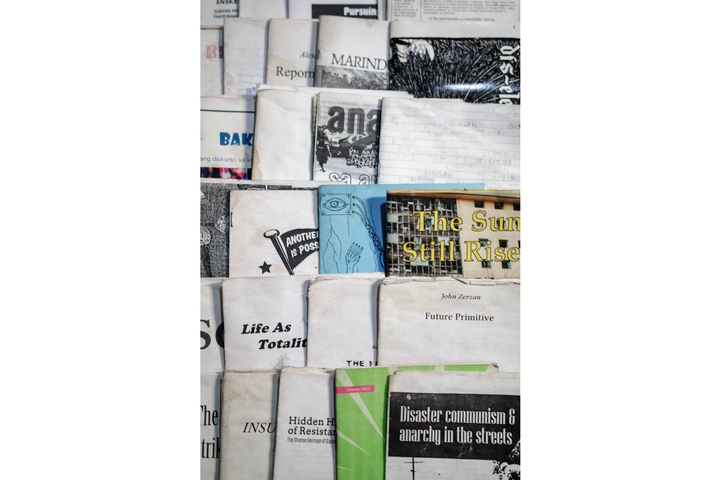
The conversation on political philosophies amplifies, as they simultaneously mention the ‘failed’ socialist and communist governments of China, Germany, and Russia. Baclagon further clarifies this assumed misperception between anarchism and the Left. He goes deep into challenging Karl Marx’s First International, the federation of working class men who swore to end the dominant economic system and replace it with cooperative ownership. He explains the failings of the mode of production narrative, and cites the teachings of Russian anarchist Mikhail Bakunin that says that Marxism will just breed another form of dictatorship.
Despite the flaws of the Left, Umali, a former member of Kabataang Makabayan, a leftist group founded by Communist Party of the Philippines leader Jose Maria Sison, acknowledges the organization’s genius in systematically drilling communist ideologies into his then young, impressionable brain. He says that leftists have a knack for articulating the goal of the movement; a trait that he thinks anarchism still lacks. But Umali questions the ways of the Left, particularly the Protracted People’s War, a political revolution strategy developed by Mao Zedong.
“Why did we become nationalists if we are communists? (kabataang makabayan means “nationalist youth) It’s really an oxymoron. That is where I started to have my suspicions. And I questioned people’s protracted war. Our ecological systems are under threat, and yet we keep waging wars.” he recalls.
A capitalist world
It might still be perplexing to some to see these anarchists in a circle, with urban shacks as the backdrop, fiercely discussing the ‘anti-isms’ of society, all the while knowing that Umali drives a tangerine Vios as an Uber driver and de Mesa still participates in one of the biggest organized systems in the world — religion.
“In history, the role of Jesus Christ challenged the state. Challenged the roman empire with a different lifestyle” de mesa explains. “we learned that we see Christ in the anarchists… they are the ones that feed the hungry, visit the poor … and then the self-agency is basic. It’s so powerful to recognize the individual’s capacity to contribute to the betterment of the masses”
But how does an anarchist thrive in a society where every single move is powered by consumerist dogmas? When asked how they settle this tug-of-war of opposing ideologies, Baclagon is quick to come to their defense. “Hindi naman pwedeng hindi ka kikilos dahil hindi mo siyang magagampanan ng tuluyan eh. Kasi kung hindi ka kumilos kasi hindi mo siya nagampanan, walang nabago,” he says.
For these anarchists, while they may come from different interest groups, they all form the same basic principles of ‘true’ anarchism: that anarchism values the capacity of the individual to organize itself; that anarchism sees the role of the individual as a tool that contributes to a larger community; that anarchism is about mutual aid, directly helping any soul in need; and that anarchism is about the belief that humans are wired to pursue the common good, regardless of an authority figure.
“The way I see it I won’t see it in my lifetime [anarchism in the broader society] … the way I see it the most we can contribute is by leaving lots of materials for the future” Umali says, as he briefly sizes up the corner of Barbin’s living room awash with shelves and shelves of anarchist materials, lying in wait for another wave of people to enter the scene, quietly asserting their rightful existence.
Source: http://cnnphilippines.com/life/culture/2017/09/06/Filipino-anarchists-for-the-common-good.html
